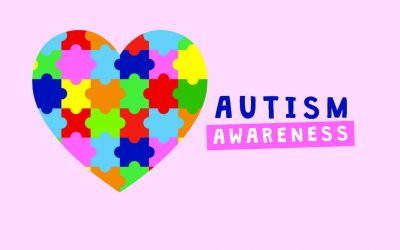Puberty and the awakening of sexuality
by Author, Janice Adams
When I began to do the research for the book , “More Creative Ideas, From age eight to early adulthood”, my youngest son who has autism was eight years old. It was very important to me that the book contain a section related to the issues and concerns of adolescence since they would soon affect our own family. That section was, by far, the most challenging part of my research.
Part of the challenge came from the fact that many of the parents with whom I spoke were also limited in their personal knowledge because they came from an era where their children were institutionalized at a young age.
The greater challenge was, and is, related to our own personal values and taboos, ( parents and professionals alike) surrounding the topic of sex and sexuality. Many people still feel extremely uncomfortable even discussing the subject. There are also cultural beliefs which in some instances can cause barriers.
Various individuals told me that the families, or the educators involved with the adolescent, believed the developmental delay of the individual with autism would mean he/she would escape any sexual stirring. This is not true, no matter how one might wish it to be so. Sexual arousal occurs in both children with autism who speak as well as non verbal individuals. It is one of the basic urges of our species.
The internal ‘clock’ for each individual’s sexual awakening appears to be an entirely personal affair. Some parents told me of children who were having erections and masturbating at the age of eight. (There were children who did so at a much younger age, but the act appeared to be related to stimulation of a sensory nature rather than connected to, for example, being near the opposite sex). Others spoke of arousal appearing in later years, even as late as the early twenties.
The items which caused arousal were also varied: the opposite sex, pictures of women in lingerie, metal bowls, feet and so on. Many of these items seem rather odd, even bizarre to us, but they should not seem too surprising given the varied sensory involvements, in general, of individuals with autism.
What is more important is to focus on TIME and PLACE:
What can you do appropriately (and safely) . Where, and when is it appropriate to do so?
This is a lesson that should start at a very early age. For instance, a youngster with autism can be considered ‘cute’ if he hugs people indiscriminately, or sits on their laps, but this rapidly becomes inappropriate and carries the threat of being misinterpreted if it continues into adolescence or adulthood. Items like the value of comprehending correct ‘social distance’ when standing near someone, are all part of the basic social skills that need to be begun while the child is young.
Since early education surrounding these issues is so important, an open rapport between families and service providers ( such as educators) is crucial so that when matters related to sexuality appear in later years, they can be approached more easily.
A great number of the anecdotes which were described to me fell into the category of benign paraphilia. In other words, on the surface the events appeared to indicate some sort of sexual deviance on the part of the individual, but in fact with some analysis, it turned out that the individual needed to learn the social rules I.E. the young man who urinated in a public bathroom with his pants down around his ankles, the fellow who unzipped his trousers prior to going into the washroom.
The illusion of sexual deviance can also be connected to one’s environment. In one situation a man with autism followed young girls. It was discovered that he simply had no appropriate same-age peers with whom to socialize.
It is widely accepted that individuals with autism are visual learners. In order to teach the individual What is appropriate it is necessary to use the same techniques that have been successful in other areas. This may mean modeling, using photos or line drawings, reducing language prompts and even ‘how to’ videos. A number of slide shows, sequential photos, anatomically correct dolls and other resources are commercially available.
Inappropriate behaviour, such as beginning to masturbate in a public place, needs to be redirected without fuss. It might be decided that the individual needs to be redirected to some form of physical activity. At other times, the young person might be redirected to the appropriate PLACE and TIME that has been designated for self stimulation. Each scenario, and the strategy which is to be used for that young person, must be decided individually.
The ability to decide what might be a correct strategy can often be gleaned from closely observing the young person’s behaviour over a period of time. For example, does self stimulation occur when the child is bored at a certain time of day? ( redirect to an activity scheduled into that time slot); when the child is anxious? ( attempt to eliminate the cause of the anxiety) ; when the individual sees a certain object? ( reduce the individual’s exposure to that object) and so on.
It is important to also examine the individual’s communication system to see if he/she has the correct selection of visuals, gestures and opportunities in order to express the need, for example, to go to a private PLACE -which might be the photo of a particular washroom.
There are many more issues related to sexuality and adolescence in general which I do not have the time to discuss in this article such as : teaching personal hygiene; an appropriate health education curriculum; changes in health such as the onslaught of seizures or depression; as well as the natural power struggle for independence that occurs in every household that contains teenagers.
There are no magic answers. Much of what you encounter will have to be dealt with using strategies on a ” trial and error” basis.
Teens and adults with autism present us all, parents and professionals alike, with huge life-long challenges. They also offer us, as individuals, opportunities to develop empathy and unconditional acceptance. You cannot be exposed to a son, daughter, child or adult with this disorder without being affected. Issues related to sexuality are basic to the Human Nature of us all.
Whether your experience of this challenge is positive, and promotes personal growth, lies entirely in the open-minded manner by which you approach the individual, and the issue.


